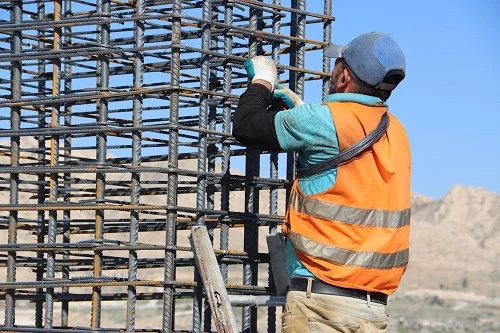Índice
Reinforced concrete is a composite material that has revolutionized the construction industry. By combining the compressive strength of concrete with the tensile strength of steel, reinforced concrete has become one of the most versatile and widely used building materials in the world. This article will explore the different types of reinforced concrete and their applications.
Concrete, on its own, is excellent at resisting compressive forces but is weak in tension. When steel rebar is embedded within the concrete, it can withstand the tensile forces that would otherwise cause cracks. The combination of these materials results in a composite that is both strong and durable. The compressive strength of reinforced concrete can be tailored by adjusting the concrete mixes and the amount of reinforcement.

While steel rebar is the most common form of reinforcement, there are other options available.
Reinforced concrete is used in a wide range of applications, including:
While reinforced concrete is a durable and versatile material, its production and use have environmental implications. The extraction of raw materials, such as cement and sand, can contribute to deforestation, soil erosion, and water pollution. Additionally, the energy-intensive production of cement releases significant amounts of carbon dioxide into the atmosphere.
However, efforts are being made to reduce the environmental impact of reinforced concrete through the development of sustainable materials and construction practices. Initiatives such as using recycled materials, optimizing concrete mixes, and improving energy efficiency in production facilities are helping to make reinforced concrete a more sustainable choice.
The field of reinforced concrete is constantly evolving, with new technologies and materials emerging. Self-healing concrete, which can repair small cracks on its own, is one promising development. Nanotechnology is also being explored to enhance the properties of concrete, such as its strength, durability, and resistance to corrosion. Additionally, the integration of smart technology into reinforced concrete structures is gaining traction. Sensors embedded within the concrete can monitor its health and provide real-time data on structural performance. This information can be used to optimize maintenance and improve safety.
Despite its numerous advantages, reinforced concrete is not without its challenges. Corrosion of the steel reinforcement is a significant concern, especially in aggressive environments. Proper design, construction, and maintenance practices are crucial to prevent corrosion and ensure the long-term durability of reinforced concrete structures.
Additionally, the weight of reinforced concrete structures can impose limitations on their design and construction. In some cases, lightweight alternatives such as steel or timber may be more suitable. Furthermore, the high initial cost of reinforced concrete can be a factor to consider in certain projects. However, the long-term benefits, such as durability and low maintenance requirements, can offset the initial investment.
Reinforced concrete has become an indispensable material in modern construction. By understanding the different types of reinforcement and their properties, engineers can select the most suitable materials for a given application. The versatility, strength, and durability of reinforced concrete make it a preferred choice for a wide range of structures.
To maximize the benefits of reinforced concrete, the following recommendations are suggested:

¡Muchas gracias!
Hemos recibido correctamente tus datos. En breve nos pondremos en contacto contigo.